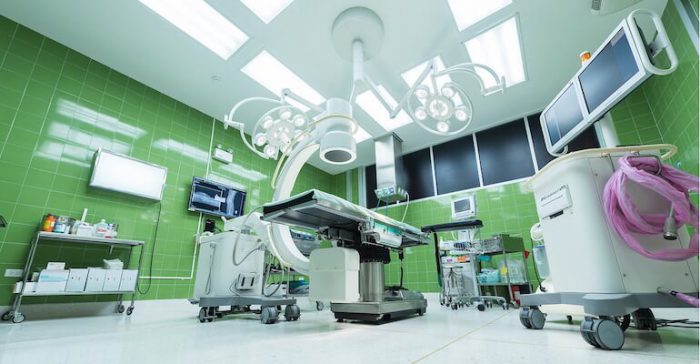McLaren Health Care Center Invests in Better Light
CREE Case Study
Timing Is Everything
Fast forward to the present: Now Corporate Facilities Manager for the entire 3,096- bed McLaren Health Care system, Miller recently completed a sweeping LED lighting initiative that replaced nearly every exterior and interior light across 11 primary hospitals with 25,000 Cree® LED fixtures, including over 12,000 Cree SmartCast® intelligent lighting fixtures. The transformation is estimated to save McLaren Health Care $1.6 million annually, with a payback of 3.7 years*—with $1.25 million of that coming in the form of energy cost savings alone.
[mks_pullquote align=”right” width=”300″ size=”14″ bg_color=”#1e73be” txt_color=”#ffffff”]WHAT CHANGED IN THE LAST SEVEN YEARS? ALMOST EVERYTHING.
Hospital systems like McLaren are quickly seeking new ways to meet the extreme challenges of an industry in the midst of disruptive change and under growing financial pressure. Meanwhile, recent years have seen big improvements in LED technology, energy efficiency, light quality, flexibility and costs—many pioneered or commercialized by Cree.
[/mks_pullquote]It’s only half the story, too. Almost as compelling as the cost savings is the potential for Cree’s innovative lighting solutions to help bolster staff productivity, enhance patient experiences and brand appeal, and reduce their carbon footprint, all while helping to increase the safety and security of their facilities. All are mission-critical factors to McLaren Health Care’s top priority: providing a sustainable first-rate patient experience.
Challenge: Delivering Better Healthcare Value that Satisfies
McLaren Health Care’s mission is clear and concise: to “be the best value in health care as defined by quality outcomes and cost.” Founded in 1914, McLaren’s subsidiaries span a 53-county service area with 6.5 million residents and stretch from the suburbs of Detroit northward for 200 miles to Petoskey and Cheboygan. The nonprofit system employs 22,500 people, counts 43,993 network providers, and has annual revenues approaching $4 billion.
Beyond Michigan, the nationwide rise of healthcare consumerism and emerging financial pressures loom large. In a 2016 report published by the American Hospital Association and ASHE, 80% of hospital CEOs said that by 2021, they expect patients will comparison shop the patient experience rating of hospitals before choosing a provider, and 84% said they expect at least 10% of hospital reimbursement will depend on patient satisfaction.1 That same year, a Yale University study cited that the healthcare sector, which consumes enormous amounts of energy to run 24/7, contributes 8% of the nation’s greenhouse gas emissions, emitting more than the entire United Kingdom.
Cost-efficient, sustainable delivery of an excellent patient experience has become mission-critical to nearly every system, with many now looking for ways to
make the most of what they already have and to maximize their return on new investment. It’s no surprise, then, that McLaren Health Care, a leader in its field, is intensely focused on improving anything and everything they can measure— from treatment costs and clinical outcomes to patient satisfaction, community benefit, safety and security, efficiency and sustainability.
Solution: Diagnosis and Treatment Plan
“We had 45 days to collect information on 11 hospitals,” recalls DiNello. “So our team literally went through every single hospital, every single area, and counted and documented every fixture, including the number of lamps in each. Then we analyzed the wattage, evaluated the application, and determined which Cree® fixture would replace it.”
With that information and the local utility rates paid by each hospital, Future Energy Group estimated that Cree LED lighting would save McLaren more than $1.6 million annually—at a minimum. Armed with that, Miller approached the McLaren board of directors.
“When we provided them the cost savings at McLaren Macomb and the feedback from that facility, and then the projected numbers for the entire initiative, it was kind of a no-brainer at that point,” Miller says. “Many of the hospital presidents had been looking to do this at their individual facilities because of impressive results at Macomb, but had stalled because of cost constraints and logistics. It actually made a lot more sense to do it on a bigger scale.”
McLaren Macomb’s COO Chris Candela agrees: “There are obviously economies of scale that we gain when we do projects across the corporation rather than one or a few individual hospitals.”
While the projected payback of 3.7 years was longer than the two-year window that McLaren usually required for capital improvements, “there were other benefits to consider,” Miller said, “and other ways to offset the project’s costs.”
“We don’t just measure the financial outcomes,” Candela says. “We also take into consideration the patient’s satisfaction and the patient experience.”
